#Electroluminescence
Explore tagged Tumblr posts
Text

Theorists propose new approach to electroluminescent cooling that works like inverted solar photovoltaic cells
In a study appearing in PRX Energy, researchers propose a way to improve the performance of electroluminescent cooling by using multilayer semiconductors. The approach, called a multijunction configuration, is already used in some special photovoltaic solar cells. Electroluminescence is the phenomenon behind how LEDs work. It involves adding charge carriers, either electrons or holes, to a semiconductor. This changes the semiconductor's properties, including how it conducts or insulates against the movement of electrical charges. In an LED, the charge carriers cause the semiconductor to emit photons of light. This emission can require more energy than is present in the semiconductor. If this is the case, the excess energy to make light comes from heat around the semiconductor. The result—a semiconductor can cool down by emitting light.
Read more.
20 notes
·
View notes
Text
The Modern Alchemist
By Arjuwan Lakkdawala
Ink in the Internet
It is said that the arrow of time always travels in one direction, time and the events that unfold in it are linear. The First Law of Thermodynamics states that the energy in the whole observable universe is the same, except it changes its state, like when you burn firewood and it turns to smoke. The Second Law of Thermodynamics states that Entropy increases and is irreversible, like when you break an egg, and that systems always go from orderly to disorderly.
And then there is the matter of reaching equilibrium, like when you pour milk into a cup of tea, the milk will flow through it till it is evenly spread.
When scientists study any phenomena, the wisest know that the main objective should be to find principles and laws about how a certain entity, or system functions, this is very difficult, and could be considered the greatest secrets of the world as we know it.
Why the fundamental laws are so elusive and mysterious we don't know, but it is clear that whenever scientists were able to establish (even if to a certain percentage) a law or principle, it was a catalyst for inventions, technology, and scientific developments.
The history of scientific studies dates way back to a branch of the science of the time called 'Alchemy" originating from the Arabic 'Al Kimia." In present day Arabic the word means 'Chemistry.'
Historical records state that Alchemy very likely started in Egypt and Arabia, and then the knowledge was passed down to Rome and ancient Greece, and then to the west. However, whatever were the scientific endeavours of the original Alchemists, it became generally indistinguishable from the other non-scientific ideas and theories that are part of Alchemy.
Western medieval Alchemists had three priorities; Find the Philosopher's Stone - which they believed has supernatural powers, find the Elixir of life and youth - possibly using the stone, transform common metals into silver and gold.
While these are fantastical aspirations, somehow the experiments that the ancient Alchemists did with the elements, was the start of sciences like pharmacology, metallurgy, and chemistry.
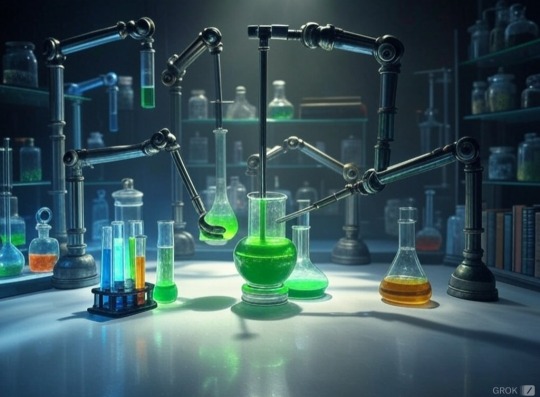
I do think there is a linear learning connection throughout the past centuries, and into the future, perhaps a pattern of the methods of discoveries, or fragments of information that will fit together like pieces of a puzzle.
In this century scientists and thinkers are the Modern Alchemists, and chemistry is the real scientific Alchemy.
But do we still try to attain things that seem on the boundaries of the supernatural - while I was going through the collection of H.G. Wells books, I read The Invisible Man, a masterpiece like his previous books that I have read.
(Spoiler Alert)
In the science fiction story he explains invisibility through chemistry, and I have seen various movies with similar ideas, the most memorable to me is the beloved Walt Disney classic: 'Now You See Him, Now You Don't,' and the Hindi classic: Mr. India.
In the first it is invisibility through chemistry, and in the second it's invisibility through the bending of light.
The two movies sum up the whole business of hypothetical invisibility by light and chemistry.
My interest sparked by Wells and the movies, I found invisibility really interesting to explore scientifically and I did a web search.
A 2022 Big Think article came up in the search, titled: 'Invisibility Cloaks Are Not Just Possible, But Are Becoming Reality'
Feels like the quest for the Philosopher's Stone, or the Elixir of Life (Modern Alchemists at work)
Perhaps this is a pattern of human curiosity that won't stop even at what appears (or literally doesn't appear) impossible.
The writer mentions science fiction invisibility in Star Trek, and goes on to explain a scientific project involving cutting edge technology, materials, and lenses.
The aim of the project is to combine "Metalenses with Metamaterials"
Metamaterial will be engineered using nanotechnology to bend light, while the Metalense will pace the wavelenght speed of each colour of light (invisible in white light) to appear again as white light after passing over the Metamaterial.
To give a more precise description:
The reason is that each colour of light has its own speed, and this is why a prism is shaped to split white invisible light into a rainbow because they don't travel through the prism at the same speed. The Metalense will balance the speed to equilibrium and so it will appear as white light again.
When travelling in a vacuum the different wavelengths of light can travel at the same speed but not when going through a medium.
We are in 2024 so I'm guessing the "invisibility cloak" which I think will be like the one in Harry Potter, is still in the making, pretty much like Alchemists trying to turn common metals into gold.
When it comes to nature camouflage is the closest thing to invisibility so far discovered.
The relation of colours, wavelengths of light, and nano structures will require volumes of books, but I have a few fascinating brief examples. The colour blue that we see is an illusion caused by nano structures, and most of the time in nature when you see blue it is iridescence, and not a pigment, it generally doesn't exist as a pigment like the other colours.
Bats hunt moths with radar like sound waves that detect them, so to counter this there are moths with hairy coating which deflect the sound waves - making it invisible to the bat.
In technology stealth planes are designed to deflect radar detection like moths, so they are invisible to radars.
However, I found more astonishing than all this was the creation of light by chemistry; such as bioluminescence and chemiluminescence. The first happens in living things, and the latter in non-living.
Light of this type is 'cold light' (very low heat.)
But how is it used for camouflage - well here comes the Hatchet Fish, it has organs that create light and point downwards, so that its silhouette against the surface of the ocean is camouflaged (in this case called counterillumination) as sunlight, and predators swimming below cannot distinguish it. Organs like these are called 'photopores.'
Another sea creature the Brittle Star uses the bioluminescence it can make in a rather ingenious type of camouflage or a decoy, that is when it is threatened by a predator it detatches a glowing arm (which it can regrow) and leaves the predator following the arm while it sneaks away.
The sea cucumber detaches its luminescencent parts on other fish, so the predator follows the glowing fish instead of it.
Bioluminescence is produced by the compound luciferin; with a chemical reaction either with the enzyme luciferase or the chemical photoprotien.
An example of chemiluminescence is the element phosphorous, officially discovered by the German alchemist Hennig Brand in 1669, when he was trying to create the Philosopher's Stone, he named the element from the Greek meaning "bearer of light" because it glowed. White phosphorous is highly flammable and toxic.
Glow-in-the-dark toys and products have phosphor. How it glows is like this: when light is shone on phosphor, its electrons get excited and are dislodged from their 'ground state' to 'intermediate state' and when they return to the ground state the energy of this is emitted in the form of the glow, it is more precisely termed 'electroluminescence.'
Arjuwan Lakkdawala is an author and independent science researcher.
X/Instagram: Spellrainia
Email: [email protected]
Copyright ©️ Arjuwan Lakkdawala 2024
Sources:
Flights of Fancy by Richard Dawkins
Big think - invisibility cloaks are not just possible, but are becoming reality, ethan siegel
Royal society of chemistry - what is alchemy
NIH - National institute of general medical sciences, biomedical beat blog, phosphorous: glowing, flammable, and essential to our cells, abbey bigler-coyne
Britannica - philosopher's stone, written and fact-checked by the editors of Encyclopaedia Britannica
Britannica - alchemy, pseudoscience, robert p. multhauf, robert andrew gilbert,
Fact-checked by the editors of Encyclopaedia Britannica
Ocean conservancy - here comes the hatchet fish, billy unotti, former communications assistant
National geographic, bioluminescence
Science direct - chemiluminescence, and overview,
Science world, chemical light reactions
Secondary article, the science behind glow-in-the-dark toys
#sciences#alchemist#alchemy#mr india#now you see me now you dont#science#Arjuwan Lakkdawala#ink in the internet#bioluminescence#chemiluminescense#electroluminescence#glow in the dark#phosphorous#the philosopher's stone#invisibility cloak#metamaterial#metalense#hatchetfish#walt disney#now you see him now you dont
0 notes
Text
The joke is that Actuating Current Powder Electroluminescent devices are leaky capacitors instead of leaky diodes, so instead of light-emitting diodes they are
.... Light Emitting Capacitors.
1 note
·
View note
Text


Volkswagen ID.3 Harlequin Edition, April 1, 2024. The Harlequin paint made famous in the 1990s with the Volkswagen Polo is to return as an option for the electric ID.3 with an electroluminescent twist. The ID.3 Harlequin’s panels will light up and pulse in response to beats from the car’s sound system and integrate with the new ChatGPT functionality being rolled out across the Volkswagen range. The limited-edition ID.3 Harlequin is available from April 1; designs can be viewed on Volkswagen’s online configurator using the code ‘JEST 1’.
#Volkswagen#Volkswagen ID.3 Harlequin Edition#Volkswagen ID.3#Volkswagen ID.3 Harlequin#Harlequin#electroluminescent#April 1#April Fools#special edition#Harlequin edition#2024#gif
119 notes
·
View notes
Text
Bright Solutions: Photoluminescent Exit Signs
Illuminate escape routes with photoluminescent exit signs, harnessing ambient light to remain visible even in blackout scenarios. These signs require no external power source, providing a reliable, cost-effective solution for emergency egress.

#Exit Signage#Exit Directional Signs#Are Photoluminescent Exit Signs Code Compliant#Electroluminescent Exit Signs#Exit Sign Photoluminescent#Glow in the Dark Exit Signs Canada#Luminous Exit Sign#Photoluminescent Exit Signs Canada#Photoluminescent Fire Exit Signs Regulations#Building Exit Signs
0 notes
Text
#Global Electroluminescent (EL) Panels Market Size#Share#Trends#Growth#Industry Analysis#Key Players#Revenue#Future Development & Forecast 2023-2032
0 notes
Note
G1 Wheeljack with human reader who conducts silly little experiments like Nilered does :3
Ex: https://youtu.be/LmAG8-V_WQY?si=1EU4d5B6NLclxKJh
https://youtu.be/NIVkBs7oWDI?si=Oyuj50EpNKTFycfH
WHEELJACK.READER
hi foxy!! how dare you make me learn chemistry/j
"Alright, kid. You can go right ahead and ignore that flask. Don't, worry. It's not gonna pop. So, what we want to do is—"
It did, indeed, pop. Vehemently, too. An explosion rattled the laboratory. More specifically, from the same flask he told you to ignore and now the entire room is cloaked with...dust? Yellow, jaundice dust floating around, opaque and thick.
You blink and hacked, flapping a hand to clear away the smog. You make out Wheeljack's silhouette amidst the daze. He's also trying to clear out the air with his servos, vents chuffing, equivalent of a sneeze.
"That's. That's suppose to happen, right?"
His 'gills', or that's what you call it, at least, flares up as he spoke. He's still clutching the green vial in his hand.
"What's suppose to happen?"
"The explosion? The dust? Half of the base's missing a left wing?"
"Oh, yeah. That." He scratches his helm, humming, swivelling around. As you said, there would be — a good chunk of the room had been blown off. How the two of you managed to survive that was beyond him.
"Could be because I set the burner too high."
You narrowed your eyes. "The manual said minimal, at most, though."
You weren't even sure if he was aware a manual existed, in the first place.
"Hm?" He snaps to you, blue optics widening a little. " It said minimal? Swore, I read it as maximum..."
"How did you even—"
The laboratory was unceremoniously barged through. A dark silhouette of red emerges from the fog. Perceptor skids across the floor, hacking and flapping a servo to clear the air as he scampered towards you.
" What is the meaning of this?" He's on the verge of strangling Wheeljack the moment he sees him. "And, why wasn't the alarm working?!"
"Oh, right. The alarm. Figured I'd used it for spare parts—"
"Spare parts!?"
"We'll put it back, though." Was your assurance and held up what's left of the concocted alarm to his face.
He doesn't seem assured once after skimming across the chunk of wall blown apart and his alarm brutally slaughtered. The sharpshooter stands there, distraught and baffled. His servos twitched and you were sure, if he had his gun, it'd definitely go off.
"What did you do?" His optics dangerously flicker to you and your science buddy..
"An experiment." Wheeljack simply replies. The green vial sloshing as he moves. "Conjuring something the humans would call interesting."
Perceptor is silent but the look on his face clearly says why? But of course, you didn't get the memo and started rambling off. Perceptor is now staring at the blown up wall and simultaneously digesting your words.
"....and, we heated up the white phosphorus, which clearly was set too high on temperature, thanks for that Wheeljack, in order to get Red-P. Then, after — the electroluminescent coating for this stink bomb we are working on—"
"Your what?"
#finally have energy to write again#gonna clear out some requests now#transformers#maccadam#transformers x reader#wheeljack x reader#transformers g1 x reader#transformers g1#g1 x reader#wheeljack#wheeljack g1#wheeljack g1 x reader
88 notes
·
View notes
Text
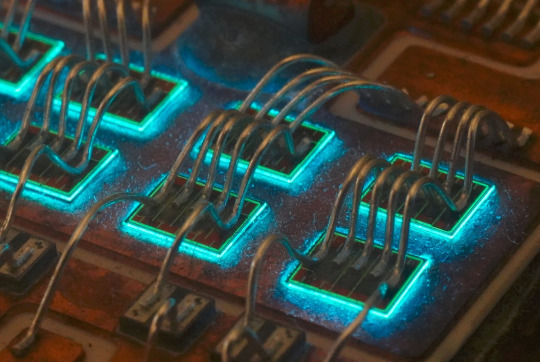
Analyzing Spectral Electroluminescence Sensitivities of SiC MOSFETs and their Impact on Power Device Monitoring - https://publications.rwth-aachen.de/record/854485/files/854485.pdf
89 notes
·
View notes
Text

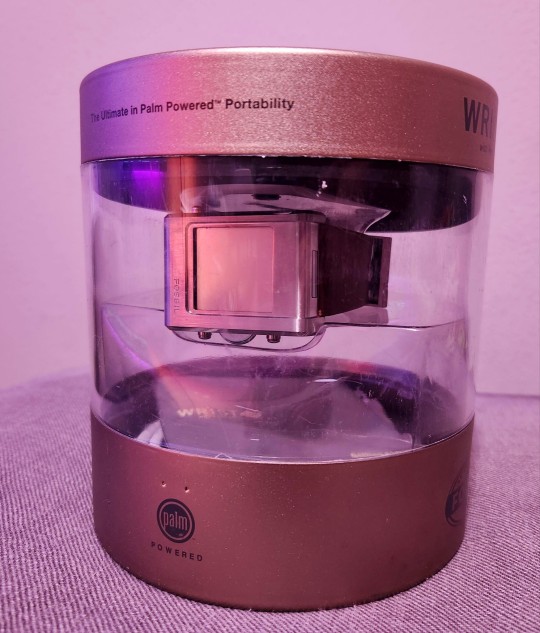
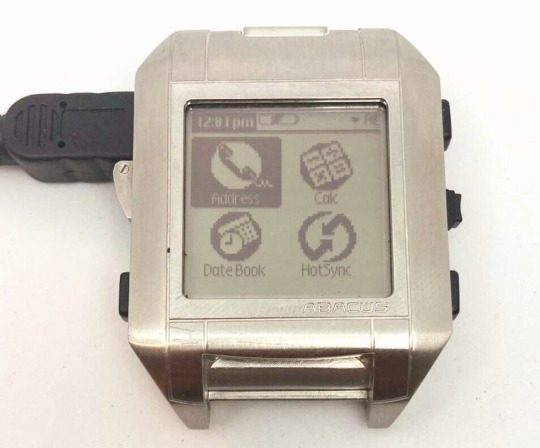
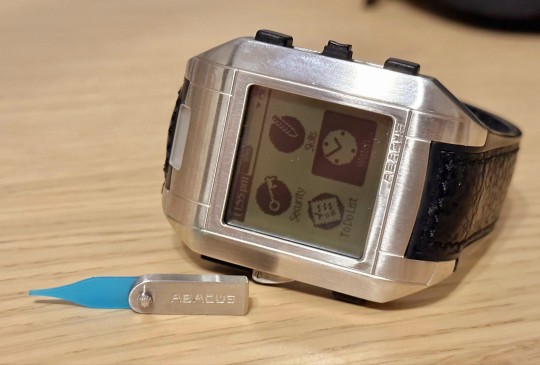
🇺🇲 Step back in time to the era of wearable tech with the Fossil Wrist PDA! Released in 2003, this innovative smartwatch ran Palm OS and boasted a Motorola DragonBall Super VZ 66 MHz CPU.
⌚️ The AU/FX series offered robust PDA functionalities, seamlessly synchronizing with PCs and featuring an infrared port, virtual keyboard, and touch screen—delivering a truly immersive user experience.
✒️ Sporting a graffiti handwriting recognition system, the Wrist PDA also housed a tiny stylus in its clasp, alongside navigation buttons and a rocker switch for effortless menu navigation. With a screen resolution akin to a Palm III and an electroluminescent backlight, it ensured usability day and night.
���️ Furthermore, this multifunctional device doubled as a TV remote via Palm applications, although with limited range. Its built-in watch program offered a variety of "watch faces" to suit every style.
💵 With a debut price of $249, the Fossil Wrist PDA epitomized cutting-edge technology and style, capturing the imagination of tech enthusiasts and fashionistas alike.
#TimeTrek#watches#men’s watches#digital watch#palm os#pda#fossil#Fossil Wrist PDA#Wearable Tech#old technology#motorola#old tech#old gadgets#early 2000s#2000s aesthetic#2000s#2000s childhood#y2k#y2k aesthetic#y2k style#device#gadgets#tech#2000s tech#technology#dragonball#innovation#abacus#handwriting recognition#made in america
24 notes
·
View notes
Text

Strategy uses boron-nitrogen covalent bonds to enable high-performance narrowband electroluminescence
To meet the demands of next-generation ultrahigh-definition displays, the organic light-emitting diodes (OLED) industry is actively pursuing the development of narrowband organic light-emitting materials. Within this effort, multiple resonance thermally activated delayed fluorescence (MR-TADF) materials based on boron-nitrogen fused polycyclic aromatic hydrocarbons have gained prominence for their energy efficiency and color purity, capturing the interest of both academia and industry. However, these materials often display long excited-state lifetimes, which can cause severe quenching of triplet excitons and thus reduce device efficiency. Addressing this issue while maintaining narrowband emission remains a crucial challenge. To tackle this, a research team led by Professor Chuluo Yang and Associate Professor Xiaosong Cao at Shenzhen University has introduced a π-conjugation extension strategy using boron-nitrogen covalent bonds, focusing on innovative molecular structures. The team's paper is published in the journal National Science Review.
Read more.
#Materials Science#Science#Chemical bonding#Organic materials#Nitrogen#Boron#Electroluminescence#Hydrocarbons#Organic light emitting diodes
16 notes
·
View notes
Text
Bodies taking their colour from:
molecular absorption: look around you
molecular emission: i thought this one would be hard because most molecules fall apart before you excite them enough to glow, but there are also chemiluminescent, sonoluminescent and electroluminescent effects, so this is probably also look around you
atomic emission: slightly harder but you're probably not very far from a tube with some tenuous gas in it which would present an atomic spectrum to you if provoked using the apparatus provided. you can also put some salts in a flame.
atomic absorption: this seems like the hard one. I don't think there would be any cases where you could see this because atomic absorption lines are very thin and sparse. obvious exception is if you use monochromatic light, but even then the only instance of this I have heard of is if you illuminate a sodium fire (free Na+ in the corona of the flame) with a brighter sodium lamp -- the flame is black.
Related question: what are the spectra of salts like generally? Presumably the greater the ionic nature of their bonding, the more atomic their spectra look, but how far does that go?
20 notes
·
View notes
Text
Dark Aircraft...

Dark F-4 PHANTOM II.
The green strips are formation lights. Made up of electroluminescent panels, their brightness can be controlled from the cockpit or turned off entirely. They can't be seen from a distance and help other aircraft stay in formation when the rest of the lights on the aircraft are turned off.
As is their custom, military pilots have given the lights their own name. They refer to them as "slime lights".
13 notes
·
View notes
Text
The display was amoral. It was many things: electroluminescent, helpful, logical, but not moral. It took no pleasure or remorse from whatever numbers its circuitry compelled it to display. Right now, that number was 58. Judith, however, all flesh and blood and dreams, did not much care for that number. It was better than 57, but not by much.
Circadian rhythms, too, are amoral. Chiefly, however, they are difficult to break, which was why Judith was, at this moment, alone in the cramped space dedicated to leisure. To know Ruth had no conscious intention to keep her waiting offered no comfort. She did not know the time, nor did she much care to know. From the window of the station, reinforced with layers of perpetually clear polymer, the sun was always visible, and so for her purposes, she lived in an eternal daytime.
The interior of Titania had far more room than the first crewed flights of the Space Programme, although if Judith were to put her mind to it, she likely could have laid the five feet and eight inches that made up her entire being--at least in the vertical sense--from one end of the compartment to the other. Her black hair would drift into collusion with the wires that trailed from one monitor to the next, overlapping like the ghosts of a choreographed routine, her pale skin jaundiced in the gold light.
She waits.
Content with elongated periods of isolation, including under duress, Judith was left trying to keep her mind away from certain words. Many of them had such negative connotations; "catastrophic", "impossible", and "limited" drift across her thoughts like the millions of specks she watches float in the vacuum surrounding her.
Sight is all she has. The constant, unending hum of circulating air has ceased to be maddening. It is a constant so anticipated it has all but disappeared entirely. The air maintains an equilibrium now undetectable on her skin. Titania was built for efficiency, not comfort, after all. But because there is so little noise she cares to hear, Judith immediately recognizes when it is broken. There is a stirring from further down the chassis, beyond the lamplit corridor that leads to the sleeping quarters. The unmistakable sound of a body propelling itself through space, crossing thresholds with single-minded determination. The hiss that erects a semblance of privacy, then the pneumatic crescendo of waste removal.
Without further ado, Ruth Schechter drifts into view. She brushes her hair, its length and color making it look like she's allowed a bushy owl to roost on her shoulders, out of her face. Her shirt is disheveled and her legs bare, and Judith has never been more relieved to see anyone.
"Pawn to F three," Ruth announces, when she's come close enough to warrant a greeting.
Judith raises an eyebrow. "Pawn to E six."
Ruth, content, continues on past, likely intent on finding something to eat. Judith follows, her mind having gratefully found something to latch itself onto.
9 notes
·
View notes
Link
Chapters: 1/1 Fandom: Original Work Rating: Teen And Up Audiences Warnings: No Archive Warnings Apply Characters: Original Characters Additional Tags: Science Fiction, Science Fantasy, Magitek, Stand alone story, Banter, Worldbuilding Series: Part 3 of Transit Summary:
intricacy.jove: He just ate a disquette!!!!!!!
welya.2020: lmao ate a disquette
intricacy.jove: Don't laugh, I'm terrified right now! I didn't know they did that! Is this normal?
welya.2020: hlod on that wasnt a typo, man just chowed down on a disquette?? plastic and all?
Or, an alien walks into a music shop.
4 notes
·
View notes
Text
Tongues of the moon, Philip Jose Farmer
Broward rose, though he wanted to cling to the floor. Directly below them—or, perhaps, to the side but still underground—a white-hot "tongue" was blasting a narrow tunnel through the rock. Behind it, also hidden within the rock, in a shaft which the vessel must have taken a long time to sink without being detected, was a battlebird. Only a large ship could carry the huge generators required to drive a tongue that would damage a base. A tongue, or snake, as it was sometimes called. A flexible beam of "straightened-out" photons, the ultimate development of the laser.
And when the tongue reached the end of the determined tunnel, then the photons would be "un-sprung". And all the energy crammed into the compressed photons would dissipate.
"Follow me!" said Scone, and he began running.
Broward took a step, halted in amazement, called out, "The suits ... other way!"
Then, he resumed running after Scone. Evidently, the colonel was not concerned about the dome cracking wide open. His only thought was for the bonephone controls.
Broward expected to be cut down under a storm of bullets. But the room was silent except for the groans of some wounded. And the ever-increasing rumble from deep under.
The survivors of the fight were too intent on the menace probing beneath them to pay attention to the two runners—if they saw them.
That is, until Scone bounded through the nearest exit from the dome in a great leap afforded by the Moon's weak gravity. He almost hit his head on the edge of the doorway.
Then, somebody shot at Broward. But his body, too, was flying through the exit, his legs pulled up, and the three bullets passed beneath him and blew holes in the rock wall ahead of him.
Broward slammed into the wall and fell back on the floor. Though half-stunned, he managed to roll past the corner, out of line of fire, into the hallway. He rose, breathing hard, and checked to make sure he had not broken his numbed wrists and hands, which had cushioned much of his impact against the wall. And he was thankful that the tongues needed generators too massive to be compacted into hand weapons. If the Axes had been able to smuggle tonguers into the dome, they could have wiped out every Soviet on the base.
The rumble became louder. The rock beneath his feet shook. The walls quivered like jelly. Then....
Not the ripping upwards of the floor beneath his feet, the ravening blast opening the rock and lashing out at him with sear of fire and blow of air to burn him and crush him against the ceiling at the same time.
From somewhere deep and off to one side was an explosion. The rock swelled. Then, subsided.
Silence.
Only his breathing.
For about six seconds while he thought that the Russian ships stationed outside the base must have located the sunken Axis vessel and destroyed it just before it blew up the base.
From the dome, a hell's concerto of small-gun fire.
Broward ran again, leaping over the twisted and shattered bodies of Russians and Axes. Here the attacking officers had been met by Soviet guards, and the two groups had destroyed each other.
Far down the corridor, Scone's tall body was hurtling along, taking the giant steps only a long-time Lunie could safely handle. He rounded a corner, was gone down a branching corridor.
Broward, following Scone, entered two more branches, and then stopped when he heard the boom of a .45. Two more booms. Silence. Broward cautiously stuck his head around the corner.
He saw two Russian soldiers on the floor, their weapons close to their lifeless hands. Down the hall, Scone was running.
Broward did not understand. He could only surmise that the Russians had been so surprised by Scone that they had fired, or tried to fire, before they recognized the North American uniform. And Scone had shot in self-defense.
But the corridors were well lit with electroluminescent panels. All three should have seen at once that none wore the silver of Argentine or the scarlet and brown of the South Africans. So...?
He did not know. Scone could tell him, but Broward would have trouble catching up with him.
Then, once more, he heard the echoes of a .45 bouncing around the distant corner of the hall.
When Broward rounded the turn as cautiously as he had the previous one, he saw two more dead Russians. And he saw Scone rifling the pockets of the officer of the two.
"Scone!" he shouted so the man would not shoot him, too, in a frenzy. "It's Broward!"
Coming closer, he said, "What're you doing?"
Scone rose from the officer with a thin plastic cylinder about a decimeter long in one hand. With the other hand, he pointed his .45 at Broward's solar plexus.
"I'm going to blow up the controls and the transmitters," he said. "What did you think?"
Choking, Broward said, "You're not working for the Axis?"
He did not believe Scone was. But, in his astonishment, he could only think of that as a reason for Scone's behavior. Despite his accusation about Scone's intentions, he had not really believed the man meant to do more than insure that the controls did not fall into Axis hands.
Scone said, "Those swine! No! I'm just making sure that the Axes will not be able to use the bonephones if they do seize this office. Besides, I have never liked the idea of being under Russian control. These hellish devices...."
Broward pointed at the corpses. "Why?"
"They had their orders," said Scone. "Which were to allow no one into the control room without proper authorization. I didn't want to argue and so put them on their guard. I had to do what was expedient."
Scone glared at Broward, and he said, "Expediency is going to be the rule for this day. No matter who suffers."
Broward said, "You don't have to kill me, too. I am an American. If I could think as coolly as you, I might have done the same thing myself."
He paused, took a deep breath, and said, "Perhaps, you didn't do this on the spur of the moment. Perhaps, you planned this long before. If such a situation as this gave you a chance."
"We haven't time to stand here gabbing," said Scone.
He backed away, his gun and gaze steady on Broward. With his other hand, he felt around until the free end of the thin tube fitted into the depression in the middle of the door. He pressed in on the key, and (the correct sequence of radio frequencies activating the unlocking circuit) the door opened.
Scone motioned for Broward to precede him. Broward entered. Scone came in, and the door closed behind him.
"I thought I should kill you when we were behind the bank," said Scone. "But you weren't—as far as I had been able to determine—a Russian agent. Far from it. And you were, as you said, a fellow American. But...."
Broward looked at the far wall with its array on array of indicator lights, switches, pushbuttons, and slots for admission of coded cards and tapes.
He turned to Scone, and he said, "Time for us to quit being coy. I've known for a long time that you were the chief of a Nationalist underground."
For the first time since Broward had known him, Scone's face cracked wide open.
"What?"
Then, the cracks closed up, the cliff-front was solid again.
"Why didn't you report me. Or are you...?"
"Not of your movement, no," said Broward. "I'm an Athenian. You've heard of us?"
"I know of them," said Scone. "A lunatic fringe. Neither Russ, Chinese, nor Yank. I had suspected that you weren't a very solid Marxist. Why tell me this?"
"I want to talk you out of destroying the controls and the transmitters," said Broward.
"Why?"
"Don't blow them up. Given time, the Russ could build another set. And we'd be under their control again. Don't destroy them. Plant a bomb which can be set off by remote control. The moment they try to use the phones to paralyze us, blow up the transmitters. That might give us time to remove the phones from our skulls with surgery. Or insulate the phones against reception. Or, maybe, strike at the Russkies. If fighting back is what you have in mind. I don't know how far your Nationalism goes."
"That might be better," said Scone, his voice flat, not betraying any enthusiasm for the plan. "Can I depend upon you and your people?"
"I'll be frank. If you intend to try for complete independence of the Russians, you'll have our wholehearted cooperation. Until we are independent."
"And after that—what then?"
"We believe in violence only after all other means have failed. Of course, mental persuasion was useless with the Russians. With fellow Americans, well...."
"How many people do you have at Clavius?"
Broward hesitated, then said, "Four. All absolutely dependable. Under my orders. And you?"
"More than you," said Scone. "You understand that I'm not sharing the command with you? We can't take time out to confer. We need a man who can give orders to be carried out instantly. And my word will be life or death? No argument?"
"No time now for discussions of policy. I can see that. Yes. I place myself and my people under your orders. But what about the other Americans? Some are fanatical Marxists. Some are unknown, X."
"We'll weed out the bad ones," said Scone. "I don't mean by bad the genuine Marxists. I'm one myself. I mean the non-Nationalists. If anyone wants to go to the Russians, we let them go. Or if anybody fights us, they die."
"Couldn't we just continue to keep them prisoners?"
"On the Moon? Where every mouth needs two pairs of hands to keep breathing and eating? Where even one parasite may mean eventual death for all others? No!"
Broward said, "All right. They die. I hope...."
"Hopes are something to be tested," said Scone. "Let's get to work. There should be plenty of components here with which to rig up a control for the bomb. And I have the bomb taped to my belly."
2 notes
·
View notes
Text
5 DIY Neon Sign Home Decor Projects you can do at Home
by Nisha Jangir
Neon signs have been a popular trend in home decor for quite some time now. They give any area a dash of retro charm and can make it into a hip, modern setting. A personalised neon sign, yet, can be pricey to buy. The good news is that you can create neon signs at home using a few inexpensive materials and tools. These are five ideas you may complete at home to decorate using neon signs.
Neon LED sign and wire: Flexible LED Neon tubes are among the simplest materials that can be used to make a neon sign. These lights come in a variety of colors and are twisted to create the design you want. All you need to get started is some wire, pliers, and LED neon lights. The wire can be used to form words, symbols, or even shapes, to which the neon tubes can then be attached with glue or tape. Plug in the lights when you're done and watch your creation come to life.
Electric neon sign: Another excellent alternative for creating your own neon sign is EL, which stands for an electroluminescent wire. When an electrical current flows through it, a thin, flexible wire turns on. If you bend the wire and attach it with tape or glue, you can create the design you want. You'll need a battery to power the EL wire, which you can attach to the back of your sign, to power the EL wire. EL Wire is available in a variety of shades and can be a wonderful way to add a splash of color to your decor.
Neon Colors: A vibrant splash of color to your decor can also be achieved with neon paint. It can be applied to a canvas or even a wall to make your neon sign. You can use stencils or draw your design by hand to create it. Once your design is complete, let the paint dry before adding a black light to make it shine.
Neon-tape artwork: An excellent substitute for conventional neon lights is neon tape. It is simple to use and offered in a number of colors. Either use the tape to draw your design directly on the wall or draw it on a piece of paper and then tape it to the wall. Because the tape is self-adhesive, it is simple to apply and remove without leaving a mark on the wall. If you want a temporary neon sign, this is a wonderful choice.
String Neon Art: String art has been a well-liked DIY craft for a while, but utilising neon string will up the ante. You can draw your design on a canvas or even a wooden board. Once you've finished designing, hammer some nails into the design to hold the string in place. Watch it glow after you're finished by hanging it up.
In conclusion, creating your own neon signs at home is a fun way to give your interior design some individuality and color. Your own personalised neon sign can be made at home using a few basic pieces of equipment and supplies. These tasks are enjoyable, simple, and only take a few hours to complete. Why not try it out and see what kind of neon sign you can produce?
8 notes
·
View notes